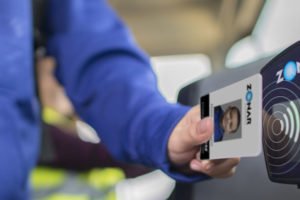What impact is telematics currently having on fleet utilization?
Telematics has a significant impact on entire fleets. Accurate utilization of telematics drives every function of their business. Repair costs, rental dependency, liquidation, Job costing, cost per hour metrics etc… When properly using telematics, fleets can implement smart fleet management solutions to achieve and ensure the following:
- Protect against theft – telematics-enabled asset tracking locates in real-time where every asset is at all times—both vehicles in motion, or on-site equipment and supplies. Being able to locate a missing vehicle loaded with valuable materials quickly so that it can be put back in service or if stolen be able to promptly notify authorities with its location is immensely valuable.
- Effective utilization of assets within a fleet – With smart telematics solutions project managers (PMs) can maximize the usage of all assets to avoid unnecessarily sourcing equipment from another site or renting additional equipment just because they can’t find everything easily. If PMs don’t know where their assets are – likely they aren’t optimizing the threshold of how many are in use every day. They also don’t know when to service the units or how to cost associate assets to jobs. They don’t know “TCO” true cost of ownership.
- Missing Meter Data –Constructions fleets rely on “meter data” to maintain/measure vehicles daily. This is manual for many – with telematics these fleets can collect this data in real-time electronically and have it easily viewable in a backend web portal. Knowing what your metered data is for a job can lead to predictive analysis towards future job costing, preventative maintenance and if / when additional assets for a job may be required.
- Visibility into preventive maintenance– Many companies have roving mechanics that just drive around all day checking the usage metrics and maintenance on assets. It’s incredibly manual—imagine daily inspections on oil, brake fluids don’t happen because it’s all done by paper. They could dramatically increase uptime and efficiency by having the engine computers telling smart fleet management technology what’s going on with an asset before it breaks down. Remote diagnostics, shop resources, uptime, scheduled preventative maintenance are all easily achievable with telematics. Not everyone has roving mechanics. But what they all do try to touch their assets on a regular basis (Miles or Hours or Days). While project managers will still be keeping tabs on their assets providing telematics data on asset status streamlines their ability to manage them.
- Maximizing Cycle Times & Uptime – Project managers can maximize the number of trips a vehicle makes in a day. For example, a cement mixer going from site to site. With telematics project managers can route the most effective routes, labor costs, who is where and which assets is closest to a particular site. This enables them to maximize their workloads limiting the need to find additional assets and drivers.
- Fuel Efficiency –With telematics project managers can monitor idle times, over speed, out of route, acceleration, hard braking and fuel-tax reporting. Unfortunately, drivers waste an exorbitant amount of fuel due to the aforementioned activities. With telematics, you can utilize the data to coach and incentivize them towards more efficient driving behaviors.
- Electronic Verified Inspection Reporting – With electronic verified inspection reporting powered by telematics PMs can ensure federally required daily vehicle inspections occur, but also can use for yard security inspections, etc. (meaning you can stick an RFID tag on anything for verification, including a yard where someone needs to walk around checking security enclosures, etc.) With telematics, compliance can be ensured, but an added benefit as is PMs efficiently keep tabs on how long and how many resources are allocated to a project, turning real-time data into to action. A lot of fleets have to wait days/weeks before they see the paper. This can lead to minor defects turning major. They also must intake this paper and filter it by priority. At that point they must also follow a paper trail in which they capture 3 signatures for compliance reasons. Down signature by a driver, maintenance signature by a mechanic and acceptance signature by incumbent driver.
- What challenges currently exist that are holding back widespread adoption of telematics in the construction industry?
Many companies are wary of the cost of hardware and implementation. However, as more and more companies of all sizes are realizing and reporting such as Henkel’s & McCoy, telematics solutions can pay for themselves with fuel saving alone in less than a year.
- Advice to contractors who are looking to leverage telematics?
Do your research and partner with a company that is innovating, has proven existing results and a customer care team to work with you whenever you may need them.
- How will telematics impact the future of the construction industry?
Telematics enables fleets to:
- Find the best resource for the job
- Predict resource costs
- Planned to actual performance and cost analysis
- Have predictive maintenance
- Location Aware Workflow
- Ensure safety and compliance







